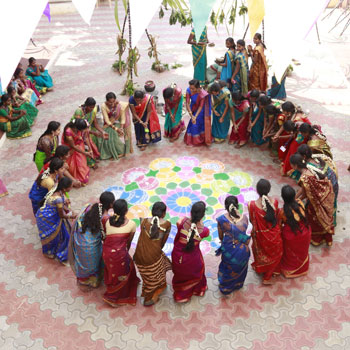Kummai - Artforms of Tamilnadu
Derived from the word Kummai, the dance form of Kummi has evolved, which is nothing but clapping the hands while dancing to the rhythm of tunes. Kummi has been an inevitable part of Tamil festivals like Pongal, Kaanum Pongal and during festivals in Mariamman temples. It is also a ritual to perform Kummi at homes during marriage functions and when a girl attains puberty. Kummi symbolizes a happy note to do some work or to carry out some ritualistic practices in groups. This is classified into various forms and few of them are Paaligai kummi, Chnadi Kummi, Oyil Kummi, Thattu Kummi, Muzhangai Kummi and lot more in the list. Various regions of Tamil Nadu follow different styles of Kummi at different occasions and festivals and it is interesting to know that the same art form has been in practice across India in different names. To name a few, Kerala hosts Kai Kottukali as an important festival, Garbaa in Gujarat, Koppi in Andhra Pradesh, Kummar in Rajasthan and so on. Kummi dance does not recommend any standard costumes or apparels. As celebration of life has been the bottomline of Tamils since ages, whenever the families or friends feel like celebrating a moment, they start performing kummi with songs composed by the individuals. Renowned Tamil poet Subramaniya Bharathiyar has written a separate section of poems titled Kummi Paattu, enlightening the specialty and significance of this art form. A small variation of this dance form includes men in outer circle with long sticks in their hands and women in inner circles. It is a very enjoyable one to watch the rhythmic movement of women clapping their hands synchronising with men beating the sticks. Kummi is seen to be a stress buster in many occasions. You can find women working under scorching heat in the fields, will try to reenergize themselves during break timings playing Kummi, thus making it a part of life for celebration or for relaxation. Don’t forget to watch Kummi performances if you happen to be in Tamil Nadu during festival times.